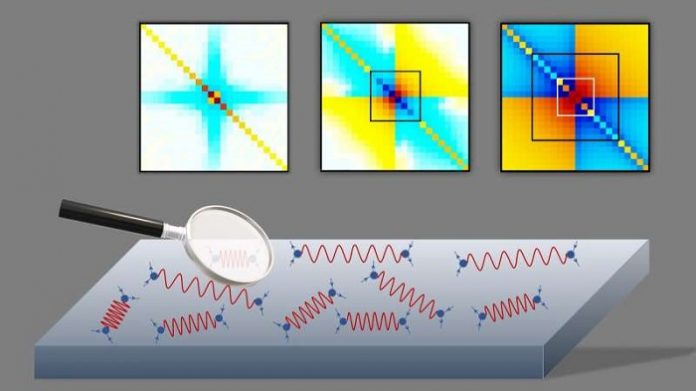In solid-state physics, the precise interactions of electrons are analyzed through meticulous detective work, ultimately to gain a better understanding of fundamental physical phenomena.
It comes as no surprise to fans of the thriller genre that in order to solve a case, fingerprints must be carefully located at the crime scene. In modern-day solid-state physics, scientists look for scattering processes—interactions between electrons—that hold the clues necessary for getting closer to the truth.
Revealing these crucial hints is particularly difficult in the case of complex materials, where many electrons play a role simultaneously. In so-called “many-electron systems,” trillions of electrons can be connected to one another and exchange energy and momentum. With the help of precise analysis, new structures are being identified—characteristic patterns in the complicated scattering processes that can help to “clear the case.”
Scattering processes and material properties
Among other properties, scattering processes determine the mobility of the charge carriers and thus control whether the system ultimately exhibits a metallic, insulating, or even superconducting behavior. Simply put, these mathematical quantities reflect how strong the electrons interact. With the help of extensive computer simulations, condensed matter researchers attempt to nail down the physical properties of many-electron systems, and ultimately answer fundamental questions of solid-state physics, for example: “How do unconventional superconductors work?” or “How do quantum physical phase transitions take place at absolute zero?”
An in-depth analysis of the scattering processes and their comparison in different physical situations allowed for the identification of clear-cut “fingerprints.”
New connections uncovered
Similar to forensic scientists at a crime scene, the researchers tried to connect many small details to see the bigger picture. They succeeded in identifying characteristic structures in the complex mathematical quantities that describe the scattering processes and relating these structures to two fundamental phenomena of solid-state physics. These fundamental phenomena turned out to be the formation of local magnetic moments as well as their screening due to the so-called Kondo effect, which both crucially control the mobility of electrons. This new connection allows for recognizing the relevant physical effects in the complex scattering processes in just a single glance. By identifying these “fingerprints,” it was even possible to discover an alternative criterion for determining one of the most fundamental energy scales in theoretical solid-state physics: the Kondo temperature.
Eventually, these findings could shed new light on previously unsolved mysteries in solid-state physics, for example, quantum criticality in heavy fermion systems, unconventional superconductivity in strongly correlated quantum materials, and surprising magnetic phenomena in transition metal oxides. The correct determination of the underlying quantum fingerprints could put research on the right track to understand these systems at a fundamental level.









